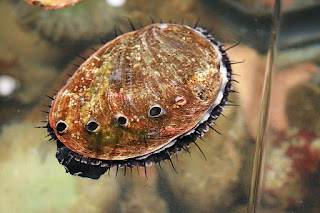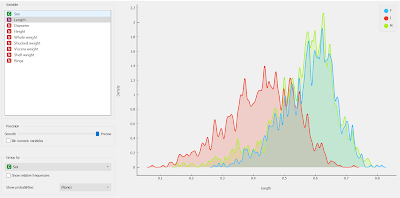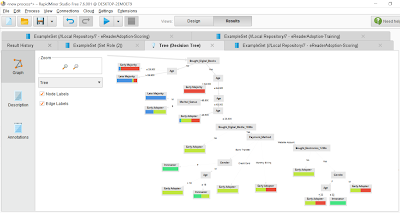BIG DATA FINAL ASSIGNMENT - ABALONE SIZE COMPARISON USING BIG DATA
Background
Abalone is a sea creature that many hunt for their meat and their shell. many has said that Abalone taste like no other sea creature the meat of an Abalone taste so good that many people want it and even people also use the shell of an Abalone as a jewellery, but because they usually lived in the seabed its hard for sailors to even hunt them and this makes Abalone so expensive and many people don't even know this creature exists the goal of this research is to introduce what is abalone and to describe what are the difference between immature, male & female Abalone using big data
Introduction
 Abalone are marine snails. Abalone vary in size from 20 millimeters (0.79 in) (Haliotis pulcherrima) to 200 millimeters (7.9 in) while Haliotis rufescens is the largest of the genus at 12 inches (30 cm).
Abalone are marine snails. Abalone vary in size from 20 millimeters (0.79 in) (Haliotis pulcherrima) to 200 millimeters (7.9 in) while Haliotis rufescens is the largest of the genus at 12 inches (30 cm).
The shell of abalones is convex, rounded to oval in shape, and may be highly arched or very flattened. The shell of the majority of species has a small, flat spire and two to three whorls. The meat (foot muscle) of abalone is used for food, and the shells of abalone are used as decorative items and as a source of mother of pearl for jewelry, buttons, buckles, and inlay. Abalone shells have been found in archaeological sites around the world, ranging from 75,000-year-old deposits at Blombos Cave in South Africa to historic Chinese abalone middens on California's Northern Channel Islands.

Methods
using orange. taking data from 4177 abalone and no missing values
to process the data we get from orange's online data sets library
the data then processed with using this method ( as shown on the picture below)
the picture above shows that female abalone can grow larger in length compared to the male ones. resulting the largest one recorded in the data set is over 0.8ft in length
and the majority of female abalone also grow larger than the male ones as shown on the picture above
but the majority of male are taller in height compared to the female ones, but in some cases female abalone could become taller due to the bigger length and diameter they have. but overall male abalone are taller in weight even they are slightly smaller in diameter.
the measurement of an abalone are divided into two different weight overall weight or total weight and shucked weight. Shucked weight is supposed to be the weight without the shell, and some abalone are heavier after removing the shell.
this is the Abalone where they are measured with the shell (whole weight) male abalone appears to be more heavier than female Abalones.
after the shell are removed then the abalones are measured again where the results then called as shucked weight. still male abalone are more heavier compared to the female ones.
conclusions
even tho male abalones are slightly smaller in size compared to the female ones but the male ones are more heavier in the whole weight and in the shucked weight compared to the female ones
Abalone is a sea creature that many hunt for their meat and their shell. many has said that Abalone taste like no other sea creature the meat of an Abalone taste so good that many people want it and even people also use the shell of an Abalone as a jewellery, but because they usually lived in the seabed its hard for sailors to even hunt them and this makes Abalone so expensive and many people don't even know this creature exists the goal of this research is to introduce what is abalone and to describe what are the difference between immature, male & female Abalone using big data
Introduction
 Abalone are marine snails. Abalone vary in size from 20 millimeters (0.79 in) (Haliotis pulcherrima) to 200 millimeters (7.9 in) while Haliotis rufescens is the largest of the genus at 12 inches (30 cm).
Abalone are marine snails. Abalone vary in size from 20 millimeters (0.79 in) (Haliotis pulcherrima) to 200 millimeters (7.9 in) while Haliotis rufescens is the largest of the genus at 12 inches (30 cm).The shell of abalones is convex, rounded to oval in shape, and may be highly arched or very flattened. The shell of the majority of species has a small, flat spire and two to three whorls. The meat (foot muscle) of abalone is used for food, and the shells of abalone are used as decorative items and as a source of mother of pearl for jewelry, buttons, buckles, and inlay. Abalone shells have been found in archaeological sites around the world, ranging from 75,000-year-old deposits at Blombos Cave in South Africa to historic Chinese abalone middens on California's Northern Channel Islands.

Methods
using orange. taking data from 4177 abalone and no missing values
to process the data we get from orange's online data sets library
the data then processed with using this method ( as shown on the picture below)
Results
here are the results that we got:
the data set that are used shows that there are 3 types of Abalone's sex the majority of the Abalone sex on the data set is male (green) and female being the least ones (blue) the immature abalone are the red ones this indicates that these abalone are still young/immature that is almost impossible to able to categorize this type of abalone is female or male.
and the majority of female abalone also grow larger than the male ones as shown on the picture above
but the majority of male are taller in height compared to the female ones, but in some cases female abalone could become taller due to the bigger length and diameter they have. but overall male abalone are taller in weight even they are slightly smaller in diameter.
the measurement of an abalone are divided into two different weight overall weight or total weight and shucked weight. Shucked weight is supposed to be the weight without the shell, and some abalone are heavier after removing the shell.
this is the Abalone where they are measured with the shell (whole weight) male abalone appears to be more heavier than female Abalones.
after the shell are removed then the abalones are measured again where the results then called as shucked weight. still male abalone are more heavier compared to the female ones.
conclusions
even tho male abalones are slightly smaller in size compared to the female ones but the male ones are more heavier in the whole weight and in the shucked weight compared to the female ones












Komentar
Posting Komentar